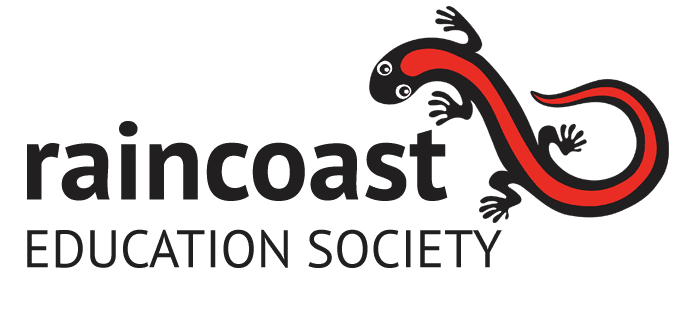Did you know Grey Whales are Baleen Whales? 🐳
During feeding, Grey Whales dive to the ocean floor, where they draw bottom sediments and water into their mouths. The water and sediment then pass through the baleen plates, allowing the food to be retained and subsequently ingested.
We invite you to visit Amphitrite House, open daily from 9 AM to 4 PM, to learn more about these fascinating marine mammals and more!
#lighthouse #westcoast #ucluelet #explorebc #greywhale #baleen #interpretivehouse #naturehouse
May 14

Did you know Grey Whales are Baleen Whales? 🐳
During feeding, Grey Whales dive to the ocean floor, where they draw bottom sediments and water into their mouths. The water and sediment then pass through the baleen plates, allowing the food to be retained and subsequently ingested.
We invite you to visit Amphitrite House, open daily from 9 AM to 4 PM, to learn more about these fascinating marine mammals and more!
#lighthouse #westcoast #ucluelet #explorebc #greywhale #baleen #interpretivehouse #naturehouse
Marine Ecology 🐙. Join us & explore the intertidal and pelagic ecosystems of Clayoquot and Barkley Sounds, highlighting the incredible diversity of seaweeds, invertebrates, marine mammals, and more.
🗓️ Wednesday, May 14th
📍 Ucluelet Aquarium
⏰️ 5:30 - 8pm
Please register by following the 🔗 in our bio - this is a free West Coast Ambassador Program, but space is limited so registration is helpful.
This program is a joint initiative of @raincoasted and @tofinochamber, @uclueletchamber, @tourismucluelet and @tourismtofino.
#westcoastambassador #adulteducation #raincoasteducationsociety #raincoasteducation #education #learning #teaching #school #learn #tofino #ucluelet #vancouverisland #canada #vanisle #britishcolumbia #westcoast
May 14

Marine Ecology 🐙. Join us & explore the intertidal and pelagic ecosystems of Clayoquot and Barkley Sounds, highlighting the incredible diversity of seaweeds, invertebrates, marine mammals, and more.
🗓️ Wednesday, May 14th
📍 Ucluelet Aquarium
⏰️ 5:30 - 8pm
Please register by following the 🔗 in our bio - this is a free West Coast Ambassador Program, but space is limited so registration is helpful.
This program is a joint initiative of @raincoasted and @tofinochamber, @uclueletchamber, @tourismucluelet and @tourismtofino.
#westcoastambassador #adulteducation #raincoasteducationsociety #raincoasteducation #education #learning #teaching #school #learn #tofino #ucluelet #vancouverisland #canada #vanisle #britishcolumbia #westcoast
This coming week - May 12 & 14, the West Coast Ambassador Program has three courses offered. Space is limited, please register & find more info via 🔗 in our bio.
🌅 Small Town Big Picture, Ucluelet
🗓️ Monday, May 12th / 5 - 8pm
📍 Ucluelet Community Centre in the George Fraser Room
🌅 Small Town Big Picture, Tofino
🗓️ Monday, May 12th / 5 - 8pm
📍 Tofino Community Hall
🐚 Marine Ecology
🗓️ Wednesday, May 14th / 5 - 7:30pm
📍Ucluelet Aquarium
These FREE programs are a joint initiative of @tofinochamber, @uclueletchamber, @tourismucluelet, and @tourismtofino.
#westcoastambassador #adulteducation #raincoasteducationsociety #raincoasteducation #education #learning #teaching #school #learn #tofino #ucluelet #vancouverisland #canada #vanisle #britishcolumbia #westcoast
May 11

This coming week - May 12 & 14, the West Coast Ambassador Program has three courses offered. Space is limited, please register & find more info via 🔗 in our bio.
🌅 Small Town Big Picture, Ucluelet
🗓️ Monday, May 12th / 5 - 8pm
📍 Ucluelet Community Centre in the George Fraser Room
🌅 Small Town Big Picture, Tofino
🗓️ Monday, May 12th / 5 - 8pm
📍 Tofino Community Hall
🐚 Marine Ecology
🗓️ Wednesday, May 14th / 5 - 7:30pm
📍Ucluelet Aquarium
These FREE programs are a joint initiative of @tofinochamber, @uclueletchamber, @tourismucluelet, and @tourismtofino.
#westcoastambassador #adulteducation #raincoasteducationsociety #raincoasteducation #education #learning #teaching #school #learn #tofino #ucluelet #vancouverisland #canada #vanisle #britishcolumbia #westcoast
🌲 There are spots left on Coastal Rainforest Ecology, Thursday May 8th from 5 - 7:30pm, on the Ancient Cedar Loop of the Wild Pacific Trail. 🥀
🌿 Free course but registration is required, follow the 🔗 in our bio.
🙌 These FREE West Coast Ambassador Programs are a joint initiative of the Raincoast Education Society, the @tofinochamber, @uclueletchamber, @tourismucluelet, and @tourismtofino.
#westcoastambassador #nuuchahnulth #adulteducation #raincoasteducationsociety #raincoasteducation #education #learning #teaching #school #learn #tofino #ucluelet #vancouverisland #canada #vanisle #britishcolumbia #westcoast
May 7

🌲 There are spots left on Coastal Rainforest Ecology, Thursday May 8th from 5 - 7:30pm, on the Ancient Cedar Loop of the Wild Pacific Trail. 🥀
🌿 Free course but registration is required, follow the 🔗 in our bio.
🙌 These FREE West Coast Ambassador Programs are a joint initiative of the Raincoast Education Society, the @tofinochamber, @uclueletchamber, @tourismucluelet, and @tourismtofino.
#westcoastambassador #nuuchahnulth #adulteducation #raincoasteducationsociety #raincoasteducation #education #learning #teaching #school #learn #tofino #ucluelet #vancouverisland #canada #vanisle #britishcolumbia #westcoast
🌊🐬 Dive into the wonders of the ocean right here at Amphitrite House Interpretive Centre! Discover our fascinating dolphin skull and explore a variety of engaging displays that bring marine life to life. 🐟✨
Join us daily from 9 AM to 4 PM and take the opportunity to ask our knowledgeable naturalist any questions you may have. Don`t miss out on this chance to expand your understanding of our incredible oceans! Come visit us today!
#ucluelet #lighthouse #education #explorebc #lighthouseloop #bones #westcoast
May 5

🌊🐬 Dive into the wonders of the ocean right here at Amphitrite House Interpretive Centre! Discover our fascinating dolphin skull and explore a variety of engaging displays that bring marine life to life. 🐟✨
Join us daily from 9 AM to 4 PM and take the opportunity to ask our knowledgeable naturalist any questions you may have. Don`t miss out on this chance to expand your understanding of our incredible oceans! Come visit us today!
#ucluelet #lighthouse #education #explorebc #lighthouseloop #bones #westcoast
